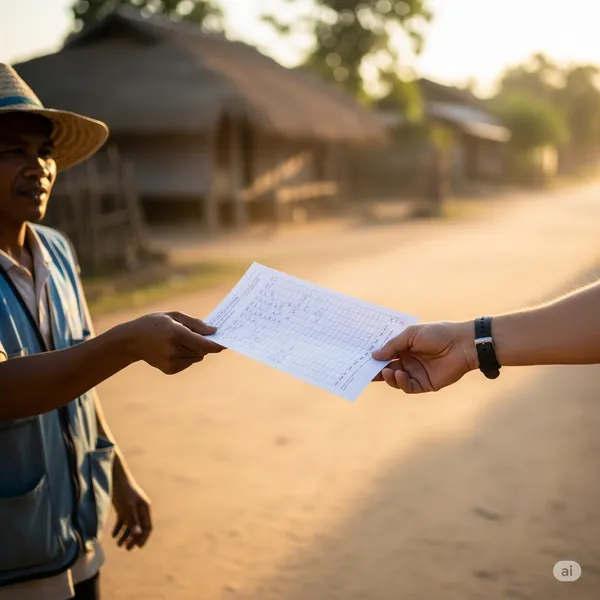Management Frameworks for Environmental and Social Safeguards (ESS)
Published on: Wed Dec 09 2020 by Ivar Strand
Adherence to Environmental and Social Safeguards (ESS) has become a cornerstone of responsible project finance and development. Major institutions like the World Bank and the International Finance Corporation (IFC) mandate these standards not as a bureaucratic exercise, but as a critical framework for ensuring sustainable outcomes and upholding the principle of “Do No Harm.”
Too often, however, ESS is approached with a compliance mindset, focused on securing upfront project approval through an Environmental and Social Impact Assessment (ESIA). This perspective misses the fundamental point: ESS standards represent a spectrum of active risks—from labour disputes and community health issues to habitat degradation and pollution—that can emerge and evolve throughout the project lifecycle.
The key challenge is to move beyond a static, compliance-oriented approach to a dynamic, proactive risk management framework. This paper outlines a structured, four-stage cycle for identifying, assessing, mitigating, and monitoring ESS risks as an integral component of professional project management.
Beyond the Checklist: ESS as Active Risk Management
The distinction between a compliance mindset and a risk management mindset is fundamental.
- The Compliance Mindset treats the ESIA and its associated management plan as the end goal. It is a front-loaded process focused on securing permits and satisfying initial due diligence. The ESS plan is often filed away, and its implementation is not actively tracked with the same rigour as financial or operational targets.
- The Risk Management Mindset views the ESIA as the starting point—an initial baseline assessment of potential risks. It acknowledges that these risks are not static and that unforeseen issues will arise during implementation. It integrates ESS management directly into the project’s core operational rhythm, demanding continuous attention, resources, and adaptation.
This shift requires treating ESS not as a peripheral activity, but as a central discipline for protecting both project value and stakeholder well-being.
A Cyclical Framework for ESS Management
A robust approach to ESS is not linear but cyclical. We have found a four-stage risk management cycle to be the most effective model for operationalising this.
- Stage 1: Identify Risks. This foundational stage involves a comprehensive identification of all potential negative environmental and social impacts associated with the project. It goes beyond a desk review of standards to include baseline environmental data collection, analysis of the local labour context, and, crucially, initial consultations with affected communities and other stakeholders. The primary output of this stage is a detailed Environmental and Social Management Plan (ESMP) that serves as the initial risk register.
- Stage 2: Assess and Prioritise. Not all identified risks are equal. Each risk must be assessed according to its potential impact (e.g., severity of harm to people or the environment) and its likelihood of occurrence. This analysis allows management to prioritise its attention and resources, distinguishing between high-priority threats (e.g., potential for significant water contamination from construction runoff) and lower-priority issues.
- Stage 3: Mitigate and Assign. For each significant risk, a specific mitigation measure must be designed and implemented. A mitigation measure is the set of actions taken to avoid, minimise, or compensate for a potential harm. Crucially, every measure must have a designated owner—a person or team accountable for its implementation—as well as an allocated budget and timeline. For example, to mitigate the risk of community opposition, the measure might be “Establish and operate a community grievance mechanism,” with ownership assigned to the Community Liaison Officer.
- Stage 4: Monitor, Report, and Adapt. This stage closes the loop and makes the framework dynamic. It involves ongoing monitoring to verify that mitigation measures are being implemented effectively and are having the desired effect. This includes regular site inspections, review of environmental monitoring data, analysis of grievance logs, and follow-up consultations. Findings must be reported regularly to project management. If monitoring reveals that a mitigation is failing or that a new risk has emerged, the cycle begins again at Stage 1.
Stakeholder Engagement: The Connective Tissue of the Framework
Stakeholder engagement is not a separate workstream; it is the connective tissue that runs through all four stages of the ESS management cycle.
- In the Identify stage, affected communities are a primary source for identifying social risks and potential impacts that an external expert might overlook.
- In the Assess stage, their perception of what constitutes a severe risk is a critical input for prioritisation.
- In the Mitigate stage, the design of effective and culturally appropriate mitigation measures requires their participation and consent.
- In the Monitor stage, they function as an essential early warning system, providing real-time feedback on whether mitigations are working and if new issues are arising. A formal Grievance Redress Mechanism (GRM) is a non-negotiable tool for this purpose.
Exhibit A: The ESS Risk Management Cycle (A conceptual diagram shows a circle composed of four connected quadrants. The quadrants are labelled in order: “1. Identify Risks,” “2. Assess & Prioritise,” “3. Mitigate & Assign,” and “4. Monitor & Adapt.” In the centre of the circle, a box is labelled “Continuous Stakeholder Engagement,” with lines extending to each of the four quadrants, illustrating its integral role.)
ESS as a Discipline of Project Excellence
Adopting a systematic framework for ESS management is more than a defensive measure to ensure compliance or avoid reputational damage. It is a core discipline of modern, professional project management. It provides a structured method for reducing operational risks, strengthening social license to operate, and improving relationships with the communities and stakeholders upon whom a project’s success ultimately depends.
By treating safeguards as a dynamic risk management function rather than a static checklist, an organisation can transform its approach from a burdensome cost centre into a source of operational resilience and long-term strategic value.



